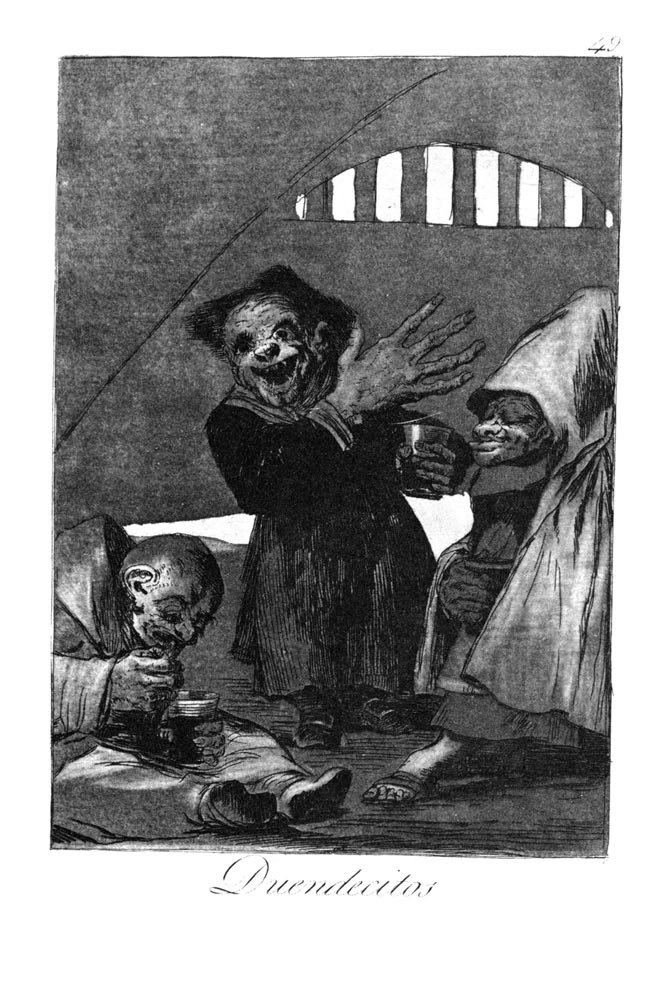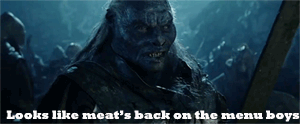true place for a just man is also a prison
Thoreau's support of prison is a repeat point brought up later in the manifesto. It seem's not coincidence that Bartleby dies there as his embodiment of Thoreau's ideals persists even until his death.
true place for a just man is also a prison
Thoreau's support of prison is a repeat point brought up later in the manifesto. It seem's not coincidence that Bartleby dies there as his embodiment of Thoreau's ideals persists even until his death.
benefactor and philanthropist
Another example of the lawyer. Both these characterizations connect him to his utilitarianism.
resign his conscience to the legislator
Here we have a connection to Bartleby. Much like the lawyer-narrator and his office, the work is entirely focused on legal documents and the requirement is to disconnect the mind and merely copy the words. Perhaps Bartleby is regaining his conscience toward the work in front of him.
At first Bartleby did an extraordinary quantity of writing
Here we have a counterpoint to Bartleby's disobedience being more than just a childish tantrum. his initial work was "extraordinary" and very dedicated. It is possible that he burns himself out after this massive quantity of writing, but the slow slump toward indifference towards everything identifies a cause somewhere else.
All who know me consider me an eminently safe man.
The lawyer, although with age, considers himself unambitious and eminently safe man. This is important to note because it characterizes him as non-confrontational and perhaps a bit gullible, which makes him especially open to take Bartleby's defiance in an accepting manner.
Parnassian
-poetics, or relating to poetry.
Shall Women Vote?New York Ledger: 1860-06-30
-yep, 60 years later.
penury
-extreme poverty or destitution.
Medes
-ancient Iranian people who lived in the area known as Media.

Jove!—oh! by Jupiter
-Jupiter is the Roman god of thunder and the sky. Jove is another name for him. The Greek equivalent is Zeus.
prie-dieu
-a piece of furniture used for prayer. Knees go on the seat and the top of the chair can be padded for arms.

mere Catholic-hating Know-Nothing
-possibly referring to Protestantism?
kilter
-out of harmony or balance.
For there is no friend like a sister, In calm or stormy weather, To cheer one on the tedious way, To fetch one if one goes astray, To lift one if one totters down, To strengthen whilst one stands
Another possible piece of evidence for a feministic theme. Most of the female poets and authors succeeding Barbauld can be attributed to furthering the feminist wave and coincidentally, women gained suffrage in Britain less than a century after the publication of Goblin's Market.
goblins
Goblins are characters of British and Germanic folklore as well as Latin and Greek mythology. They are considered evil and characteristically mischievous across most interpretations. Below is a painting titles "Little Goblins" by Goya.
http://www.newworldencyclopedia.org/entry/Goblin

One had a cat's face, One whisked a tail, One tramped at a rat's pace, One crawled like a snail, One like a wombat prowled obtuse and furry, One like a ratel tumbled hurry-scurry. She heard a voice like voice of doves
This can be interpreted as Rossetti making the villains of the poem more child-friendly. Another interpretation is that much like the biblical demons, the goblins take on facades to make them seem more likeable.
moonlight
Another example of sexual reference. The night is often related to passion as well as of functioning in a sexual profession. Purchasing fruits in the moonlight is also unusual, perverting the interaction with the goblins further.
Chuckling, clapping, crowing, Clucking and gobbling, Mopping and mowing, Full of airs and graces, Pulling wry faces, Demure grimaces, [15]Cat-like and rat-like, Ratel and wombat-like, Snail-paced in a hurry, Parrot-voiced and whistler, Helter-skelter, hurry-skurry, Chattering like magpies, Fluttering like pigeons, Gliding like fishes,-- Hugged her and kissed her; Squeezed and caressed her;
The poem is often described as being inappropriately for children, lines like this which are examples of alliteration, give the poem a dancing quality which makes it child-friendly. Much like there is little to no direct reference to Christianity, there are no direct sexual references, only interpretations.
fruit forbidden
This is one of the only few instances of a reference to Genesis. It is inverted only to rhyme with the next line. It's important to note that one of the only uses of this term is said by Laura, the one afflicted for eating the fruit. Even then, the term Forbidden Fruit isn't used in the bible. It is more of a cultural metaphor for the situation in Genesis and sources of temptation in general.
http://openprairie.sdstate.edu/cgi/viewcontent.cgi?article=1977&context=etd
She fell at last; Pleasure past and anguish past,
These lines sound akin to a refractory period after sex, which furthers the sexuality interpretation of this poem.
Life out of death.
Rebirth, perhaps furthering the religious sub-tone.
Apples
Perhaps Rossetti placed apples first in the list in order to evoke images of the book of Genesis. Most religious interpretations arise from this and the theme of temptation is applicable to the character of Laura. However, the procession of fruits and the lack of direct christian reference in the poem can lead to other interpretations.
GOBLIN MARKET
Everett, Glenn. "The Life of Christina Rossetti." The Victorian Web. N.p., 1988. Web. 09 Dec. 2016. http://www.victorianweb.org/authors/crossetti/rossettibio.html.
Farhana, Jannatul. "Revolutionary Poetic Voices of Victorian Period: A Comparative Study between Elizabeth Barrette Browning and Christina Rossetti." English Language and Literature Studies 6.1 (2016): 69. Web. http://www.ccsenet.org/journal/index.php/ells/article/viewFile/57703/30859.
Mihajlovic, Randi, "Queering the Spheres: Non-Normative Gender, Sexuality, and Family in Three Victorian Texts" (2016). Theses and Dissertations. Paper 974. http://openprairie.sdstate.edu/cgi/viewcontent.cgi?article=1977&context=etd.
Christina Rossetti, “Goblin Market”

And when at last her time drew near, 154Her looks were calm, her senses clear.
Here, the idea that Martha Ray killed her child is challenged as it is said by Old Farmer Simpson that the child in her womb actually brought back her senses. However, in the first half of the stanza the child is thought to actually increase Martha Ray's madness. This back and forth thought could just be the local folk thinking amongst themselves about Martha Ray's condition. This distances us from the truth as we never actually know whether Martha Ray is mad or if she even killed her child.
I never heard of such as dare 99Approach the spot when she is there.
For some reason the speaker warns the main character away from Martha Ray's home. Her home is described as a hut, which connotes witches and magic. Historically, madness was considered a result of possession or witchcraft, and this line of thought wasn't properly challenged until the mid 19th century, 50 years ahead of this poem. Perhaps Wordsworth is merely reporting the superstitions of country folk and doesn't necessarily hold these views himself.
Not higher than a two years’ child
It could be coincidence that the tree is no higher than a 2-year old child, but equating the tree to a child could be an allegory. Whereas the pond presents a reflection of the child, perhaps the tree is also a reflection, where the surface presents a grim tree but below is something beautiful.
230Whene’er you look on it, ’tis plain 231The baby looks at you again.
Much like how the child is hidden beneath the hill, the child is also hidden within the reflection of the pond. This concept gives depth to reflective properties, metaphorically, where looking at a reflection presents something deeper than the mere image being reflected. Another interpretation is that the child and main character are related in some way as their movements mimic one another, much like a reflection would mimic the person standing in front of it.
And the Children are culling
Culling could be a play on words, as above in the stanza the blessed creatures, or children, are heard calling to one another. Culling could also mean separating or picking, so the children could be picking the fresh flowers mentioned in line 48.
As to the tabor's sound
A tabor is a portable snare drum played with one hand. It is used in the military as a marching instrument as well as in festivals and parades. There are allegories to the advent of man destroying the glory of the world as well to funerals and mourning in the poem, so at the least it be proper to say that the world is in desolation much like how war leaves ruins in its wake.
The Incomprehensible!
This refers to god. Coleridge sees god as not comprehensible, or rather beyond comprehension. As such, any critique aimed at him is foolhardy as arguments and logic are purely human abstracts and cannot consider god.
Bubbles that glitter as they rise and break58On vain Philosophy's aye-babbling spring.
Coleridge is comparing his thoughts to that of a vain philosopher. Philosophy in most cases takes an atheistic perspective, otherwise it'd be called theology. The vanities of philosophers concerning god are like bubbles formed from a babbling spring, where they form and pop quickly; they are insubstantial. 'Aye-babbling' could also mean that atheistic thoughts are usually self-serving, in which they agree with themselves for themselves, hence "aye", and babble like children talking.
DIAN's bright crescent, like a silver bow New strung in heaven
Dian refers to the Roman goddess Diana (Artemis in Greek). She is the goddess of the hunt and her name stands for heavenly or divine, so the allegory "silver bow new strung in heaven" is appropriate for her. Although the primary goddess of the moon is Luna (in Latin, Selene in Greek), the use of Diana and Venus (Aphrodite) later on indicates that their other likenesses are being attributed to the moon: nature and love.